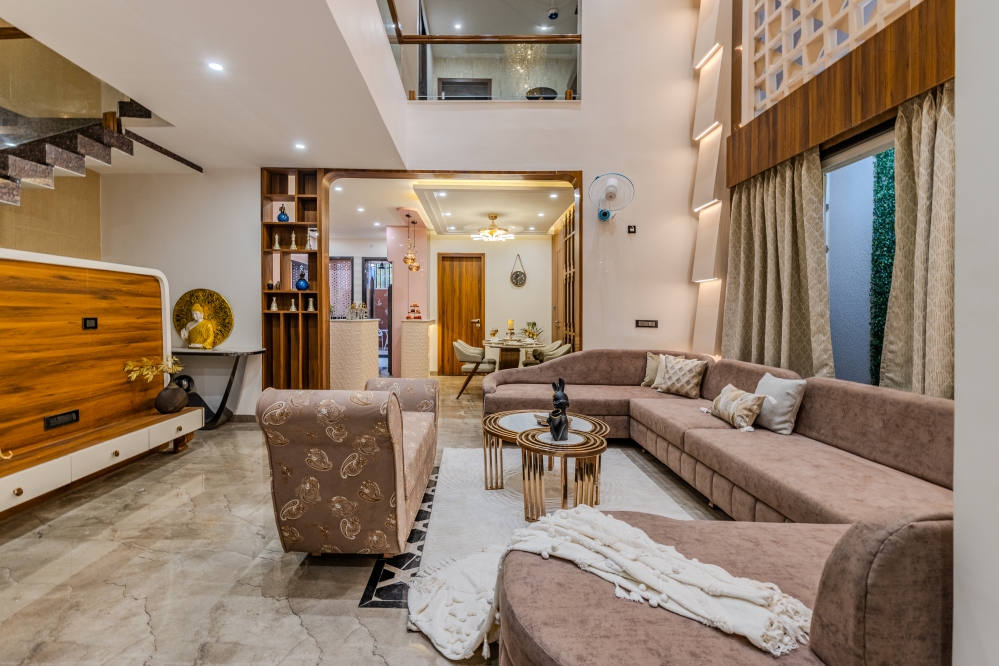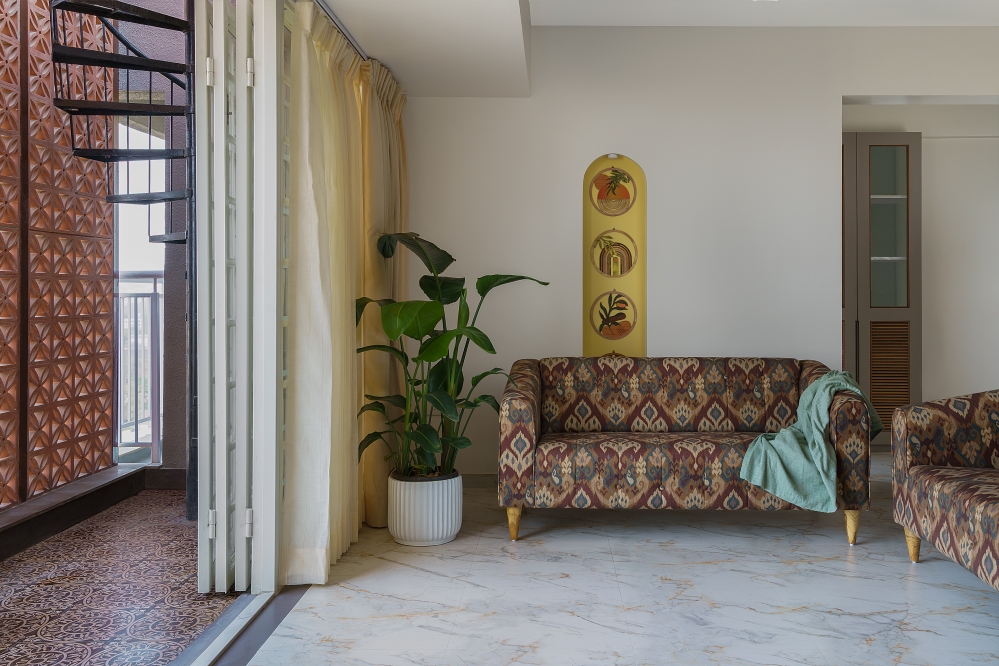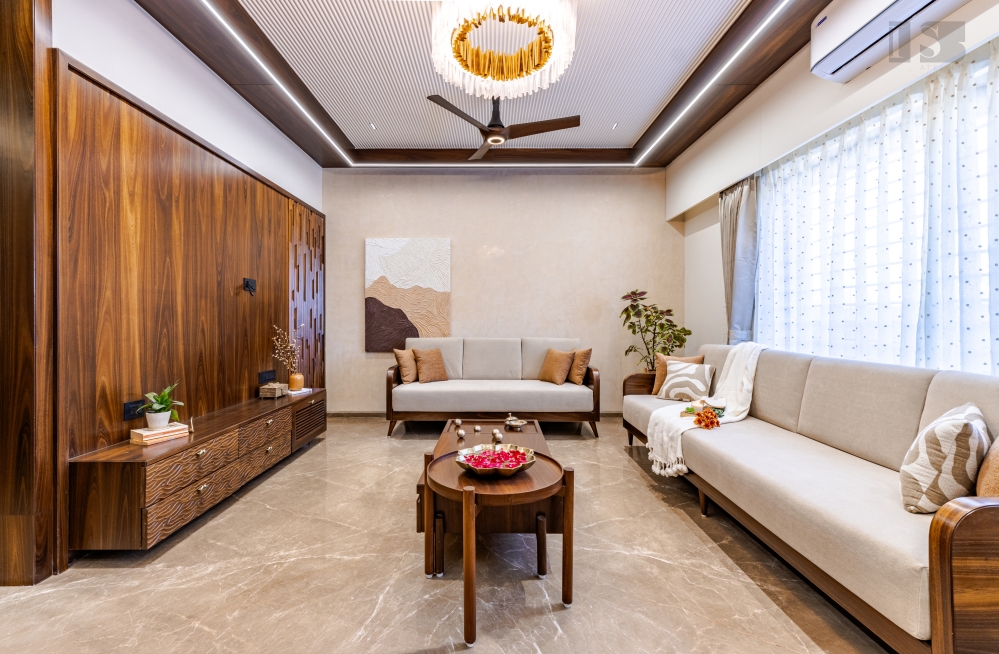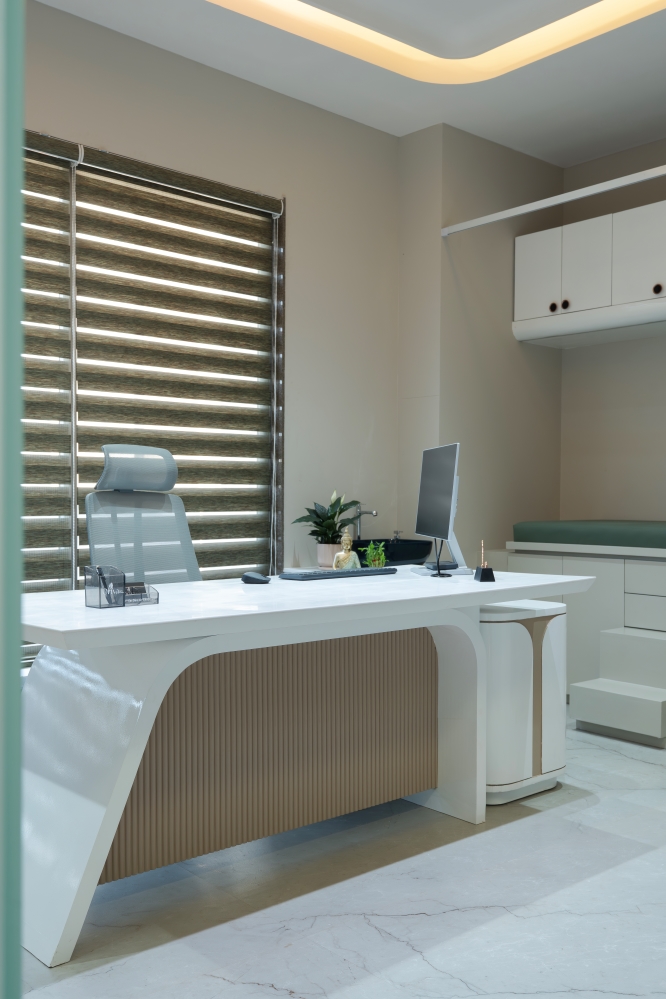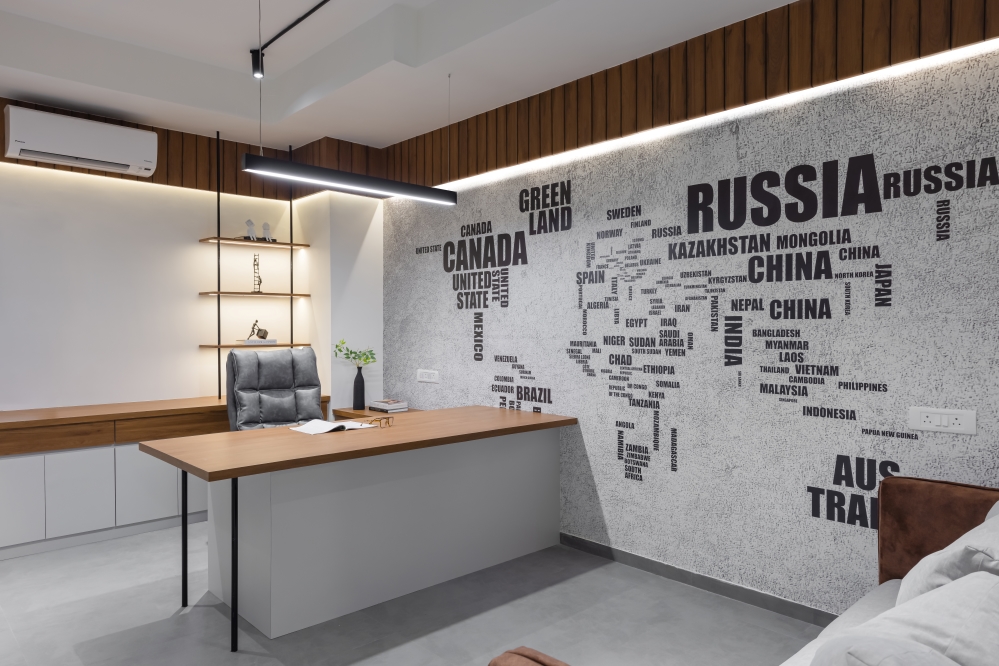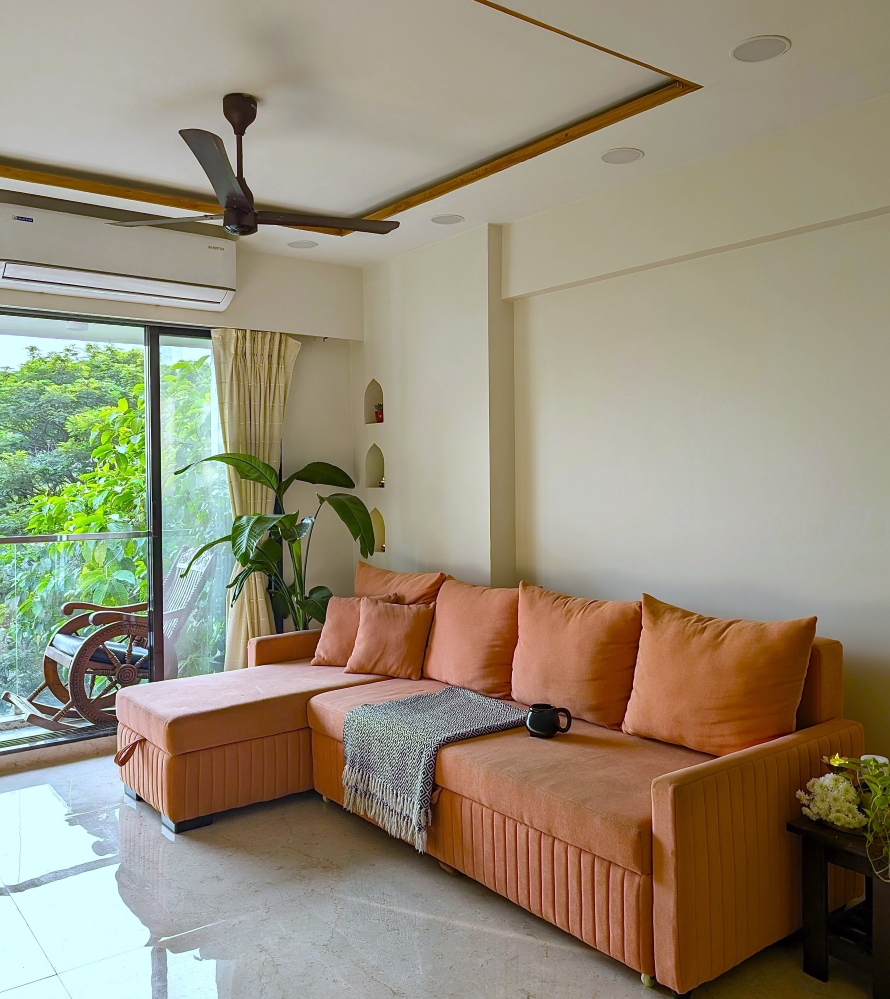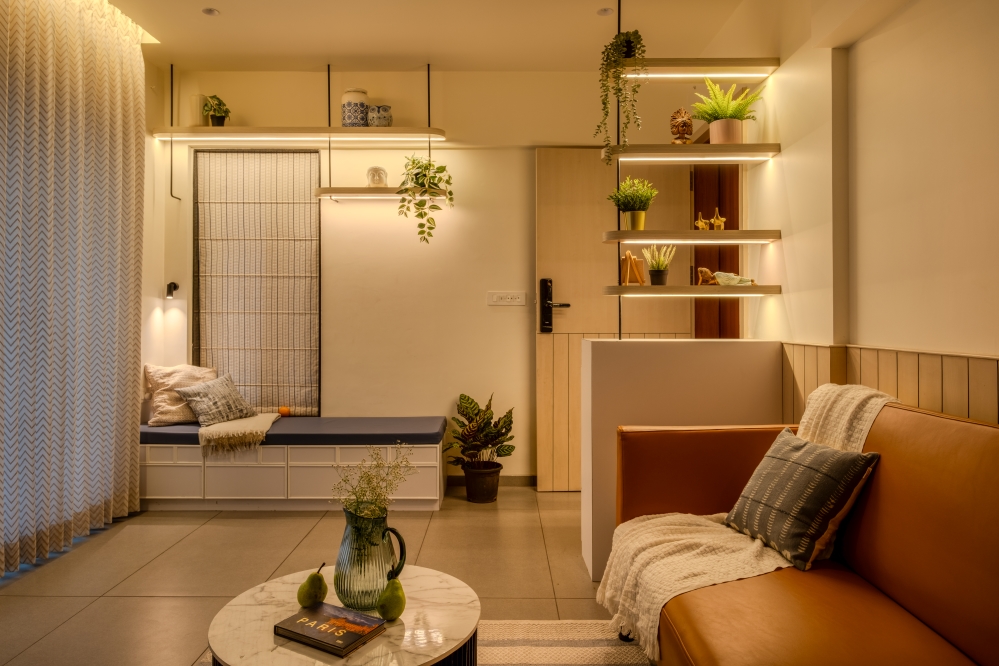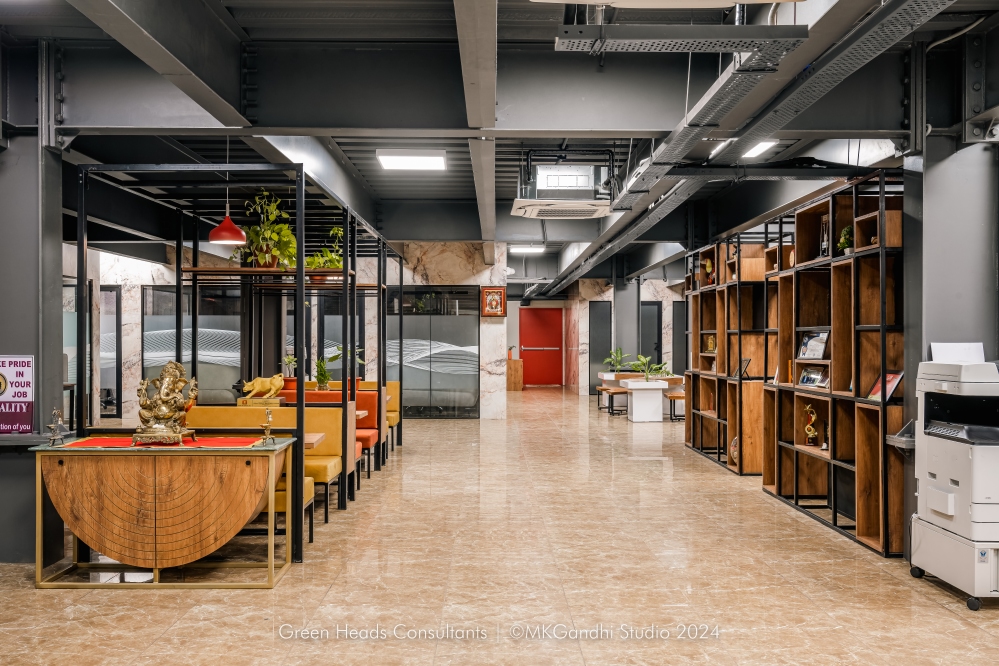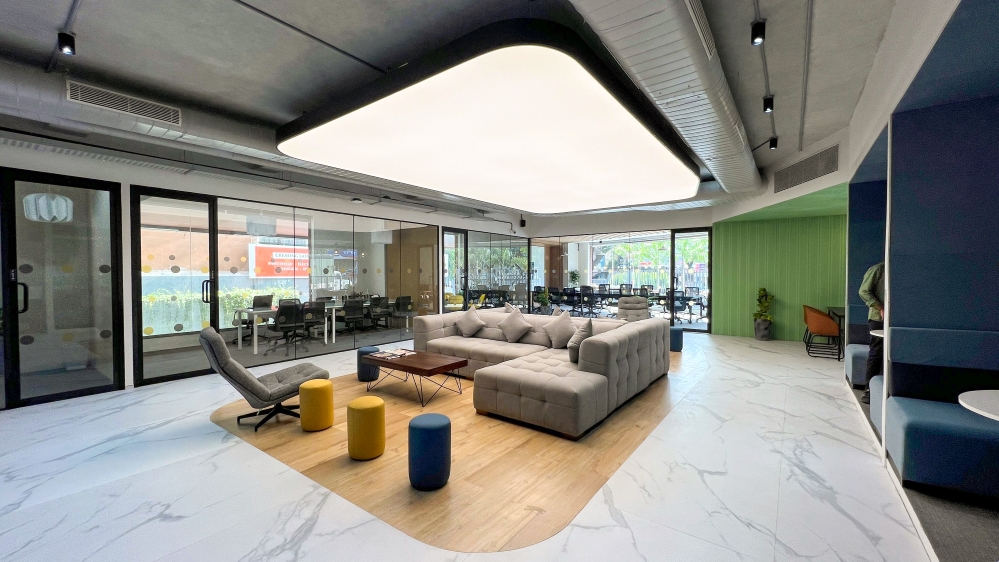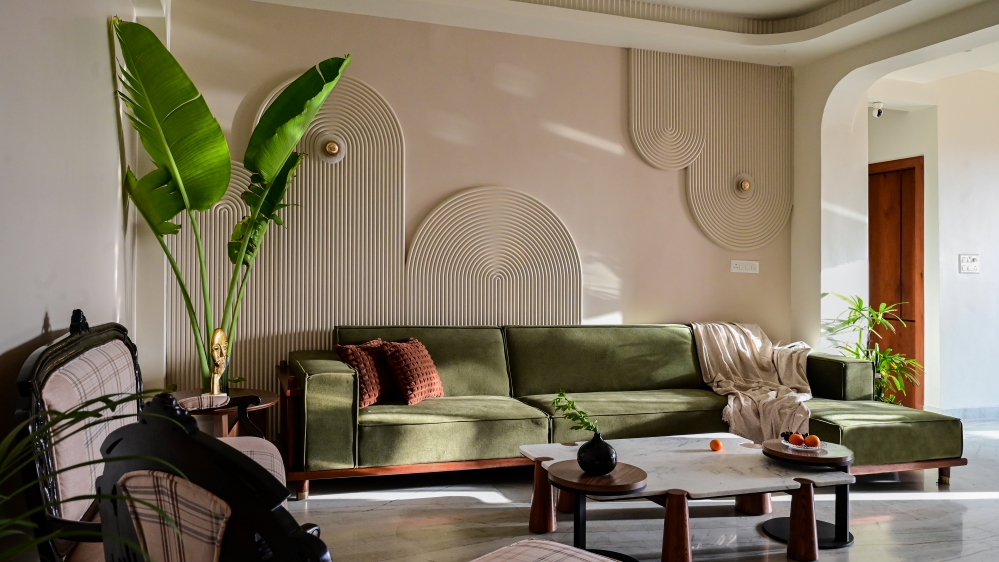Meera’s Bistro | Studio Clay | Meerut
The architect has carved a significant niche when it comes to developing the city by conceptualising and delivering high end spaces by bringing in the essential functionality and aesthetics required to take the city of Meerut to a higher level.
The site is situated at the highway lying in the green verge area of an existing Banquet at the fast-moving Delhi-Uttarakhand corridor, 4 feet below the road level. Since, the site was a part of the banquet; the architect’s intention was to create a resort-like setup in order to keep the banquet’s feel intact. The idea was to create a built form which could visually stand-out from the rest of the buildings on the busy highway and measures were taken to reduce the noise from interfering with the calm ambience of the restaurant.
As a matter of chance, there existed a kitchen at the end of the green verge area which was used for the banquet and was misspent most of the year during the lean periods. So, the architect planned to renovate that kitchen so that it could be utilised both for the banquet and the restaurant.
The architect wanted a resort like restaurant and to have a sense of openness where people come for a greener, refreshing and rejuvenating retreat away from the city. So, he planned to dig up the green verge area to create a Bistro 15 feet below the road level to combat the noise pollution as well as introducing levels in an otherwise plain subtropical city which is the key landscaping element in the entire bistro.
The architect used the remnant earth that was dug out to lift up the area adjacent to the road from 4 feet below up to 4 feet above the road level, thus making the bistro visibly approachable from the road.
The limitation of working in the green verge area was utilised as an opportunity by the architect to create a bold form by introducing a massive tensile structure (as only temporary structures were allowed), thus, enabling it to be seen from the busy highway.
Deciding to give it a hill station appeal in a subtropical region, an enclosed Coffee shop was designed to create a vantage point from where the diners could get enjoy the feel of the sunken bistro (as one would see in a hill station overlooking a valley). The built mass of the coffee shop was sited in such a manner that it created a shadow play on the frontal bistro area, thus cutting down the harsh rays of the west sun keeping the bistro amiable. Moreover, the entire scheme revolves around landscaping elements with plenty of vantage points, rose pond, greenery in a vast expanse and waterbodies, altogether setting up the microclimate for the area.
The design itself is a green retreat with lot of plantations combined with concrete grit flooring and thatched roofs that keep the natures feel intact to the modern concepts of tensile roofs. The view of the bistro has been obstructed by a series of Ficus plants on the way to the banquet. Veronica shoots have been used extensively as wall creepers adding to the pleasant ambience of the bistro.
The architect used an open type tensile structure (TS) for various architectural and structural reasons. It is best option available for large Span and column free structures with minimum steel tonnage for a given footprint. The other big natural benefit of TS is translucency which vary from 10 to 40% that gave us the aesthetic opportunity to design our building with natural and artificial light. The use of artificial light can dramatically change the tensile structure into a sculptor. From structural point of view these structures are extremely light weight in comparison to conventional steel, composite or RCC structures thus saving a lot of material and reduced loads on structure. Although this does not always translate into savings since these are unique structures that require specialised vendors and consultants whose services may be expensive compared to that for conventional structures. Flexibility of membrane structures allows increased stability as they can deform under wind load.
The approximate steel tonnage in this project for coverage of 3500 sqft. area is 3.5 tons which is significantly less than that for a conventional space frame of MS truss type structure.
Under the massive tensile roof, having multiple seating options including the cabanas and the bespoke cages, the bistro seems no less than an Alfresco Dining on a hot summer evening.
FACT FILE
Project Name : Meera’s Bistro (Grand 5)
Design Firm : Studio Clay
Principal Architects : Ar. Bharat B. Gupta, Ar. Asit B Gupta
Project Location : Meerut, Uttar Pradesh
Project Type : Café Architecture & Interior
Project Status : Completed
Client : MR. Robin Chaudhary
Photography Credits : Bharat Aggarwal Photography
Consultant Firm : Engineering Consultants and Planners
Consultant Engineer : Er. Amit Gupta
Steel Fabricator : Mahaveera Tent
Steel Tonnage : 3.5 Tons (Approx.)

































